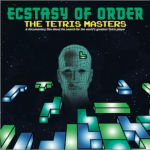Elements of Tetris
Tetris is so simple, you might (mistakenly) think it’s the simplest possible version of itself. (The original gameboy Tetris, not whatever feature-laden version happens to have been released this year.) It’s fairly easy to make a list of the various “elements” that go into Tetris. (I’ve always called these mechanics, although someone online recently pointed out mechanisms might be more appropriate.)
– Blocks made out of 4-squares (tetrominos)
– A column-shaped gameboard
– Gravity, the tetrominos move from the top of the screen to the bottom, where they stick in place
– Line clear when a row of blocks is completely filled
– a score counter that increments when lines are cleared
Sure, there’s probably some other stuff in there, but at a very high level, I think these are the most interesting elements. The last few months I’ve spent a lot of time playing a few different games that I think basically fall into a new “branch” of the Tetris family tree. One where the main difference is that they’ve replaced the block-falling gravity with free-form block placement. Turns out, this makes for a bunch of interesting games!
Hex FRVR
I guess I probably saw Hex FRVR first, back in October, when it hit my “Tetris” google alert, and then shortly thereafter as my Twitter feed exploded with it a bit. I think there were probably just as many people impressed that the mobile web app (the game is fully playable on its website) functioned as well as the mobile app as there were folks commenting on the game itself. Although plenty of folks did comment on how easy it was to get sucked into it. I got pretty hooked, and was still playing it in November when I went to Practice.
1010!
Over thanksgiving, only a few weeks later, my brother Dan introduced me to 1010!, which evidently he and his girlfriend have been playing for a while now. I hadn’t seen it before, but I guess that’s not terribly surprising given that about 500 games come out every day on iOS. Looks like it first came out September 2014, for iOS anyway, and it’s been successful enough that they’ve released 1010! World, which is basically the same game broken up into finite levels and put on a map like many of the big puzzle games do nowadays. (Candy Crush etc.)
1010!, played on a square grid, does that mechanic swap I mentioned, bye-bye gravity, hello touch-and-drag, but there are some other pretty major differences too.
It’s played on a ten-by-ten sized game grid, and I’m assuming that’s where the name comes from. 1010! also does away with having a single available piece, and showing you the order of the upcoming ones. Instead you have three available pieces, and see nothing further until you play the last of them. In fact, most of the strategy in the game comes from effectively using the three you are given together to clear some of the board before the next three.
Always Be Clearing
But if 1010! were just giving you tetrominos, it would probably be too easy. I’m guessing I could play indefinitely unless something more was changed, which it is. (In fact, it’s worth noting that 1010! doesn’t include the J, L, Z, or N pieces at all.)
So to balance the game toward ending, it throws in blocks of the following (important) sizes: 1×5, and 3×3. Sure, you can lose from the other block sizes if you’re not careful, but mainly, it’s going to be one of these two that you will inevitably not be able to fit onto the gameboard, thus ending the game.
I think it’s this balance (when to throw you “hard” pieces, and what percent of the time to just give you the basics) that makes both 1010! and Hex FRVR good games. They are both tuned to let you play for a bit, but then stump you not that long after. Playing for a while feels like an accomplishment, the classic “high score high”. Whether the games give you essentially random pieces, or just the illusion of random pieces, I cannot say, but just as in Tetris, you can easily talk yourself into believing the game is not random. Maybe it’s giving you this piece just when it knows it’s impossible for you to play it.
Everything is a Remix
It’s no secret that a lot of my game ideas are also inspired by Tetris.
The quote, “Good artists copy, great artists steal.” evidently goes back quite a bit further than T.S. Elliot. I very much subscribe to the thought that everything is a remix.
Right now I’m working on a port of my first game (playable on this site) to iOS. It’ll be called Action Go, and will play like the web counterpart, but look a whole lot better. The entire inspiration for that game was, “What if I removed line-clearing, and replaced it with the capture mechanism from the board game go?” I’m not planning on removing the web version, but the new one adds a lot of stuff, so I hope it’ll find a following on iOS and Apple TV when it comes out early 2016.
PS, It’s all been done
By the way, I have no idea if the Hex FRVR folks know about 1010!. But it’s a pretty fair assumption that they do. After I spent some time thinking about this, I realized I could whip out a triangle-based game with similar mechanics in very short order. A quick search later, and I’d found Tringles, which does exactly that. (Good thing I didn’t waste any time prototyping!)
It’s easy to see though, that there are nearly infinite ways you could take just a simple game and swap out one mechanic, (and adding a few more where it makes sense after that) to get a whole new game. Or hell, a whole new genre of games.
P.P.S. Crash
If anyone who works on 1010! read this, know that the app is crashing for me on my 6s+ like every 2 minutes. I don’t think it was doing this until the recent 9.2 update. Please fix it. I have an addiction to manage.




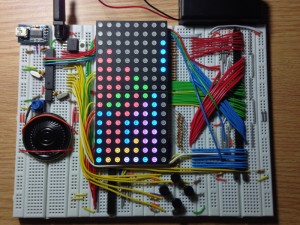

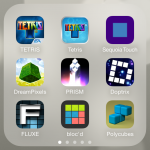
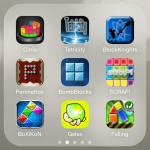



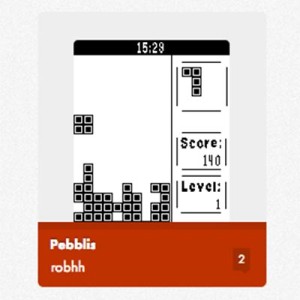 So I finally got with the program and figured out how to load up watch faces and 3rd party software onto my
So I finally got with the program and figured out how to load up watch faces and 3rd party software onto my 